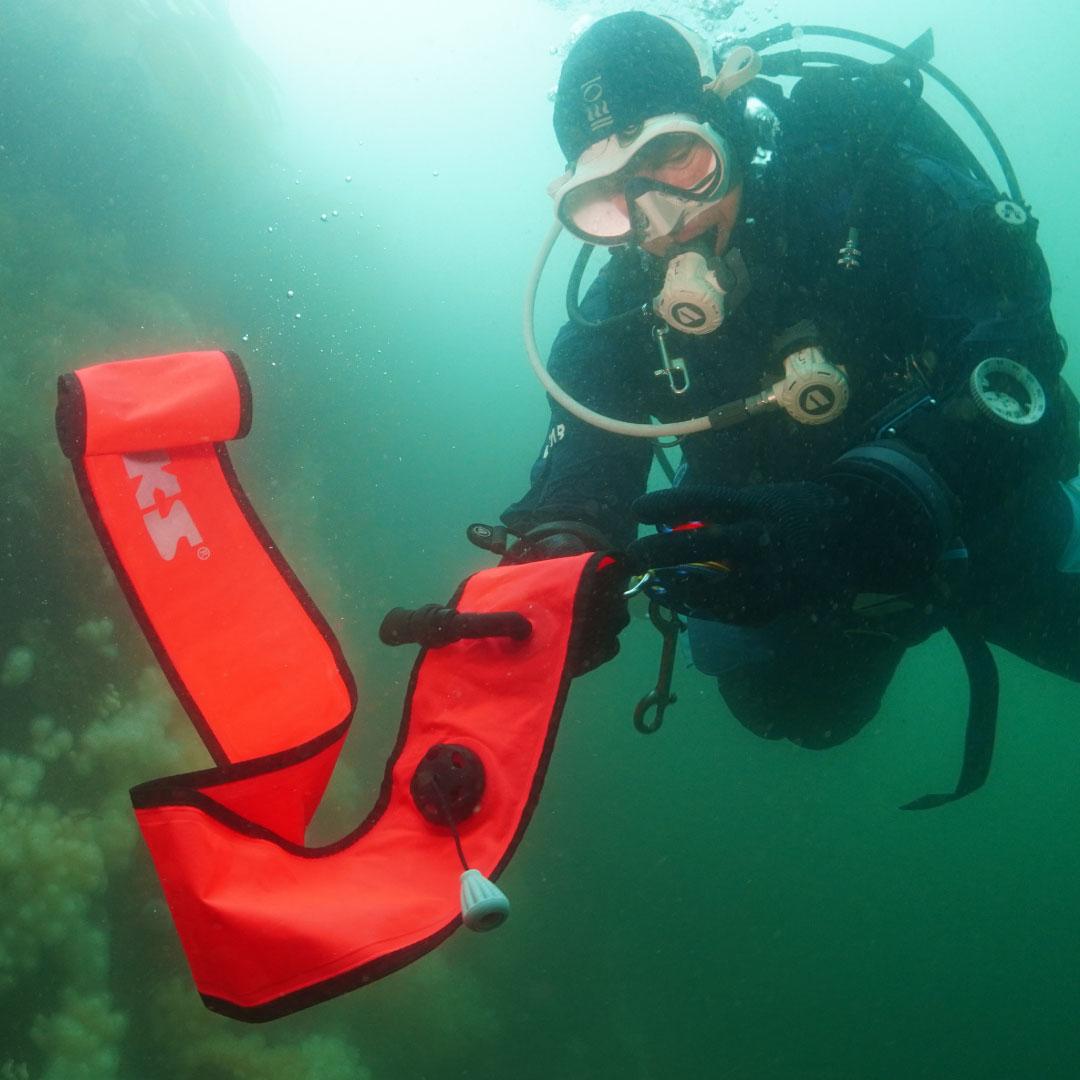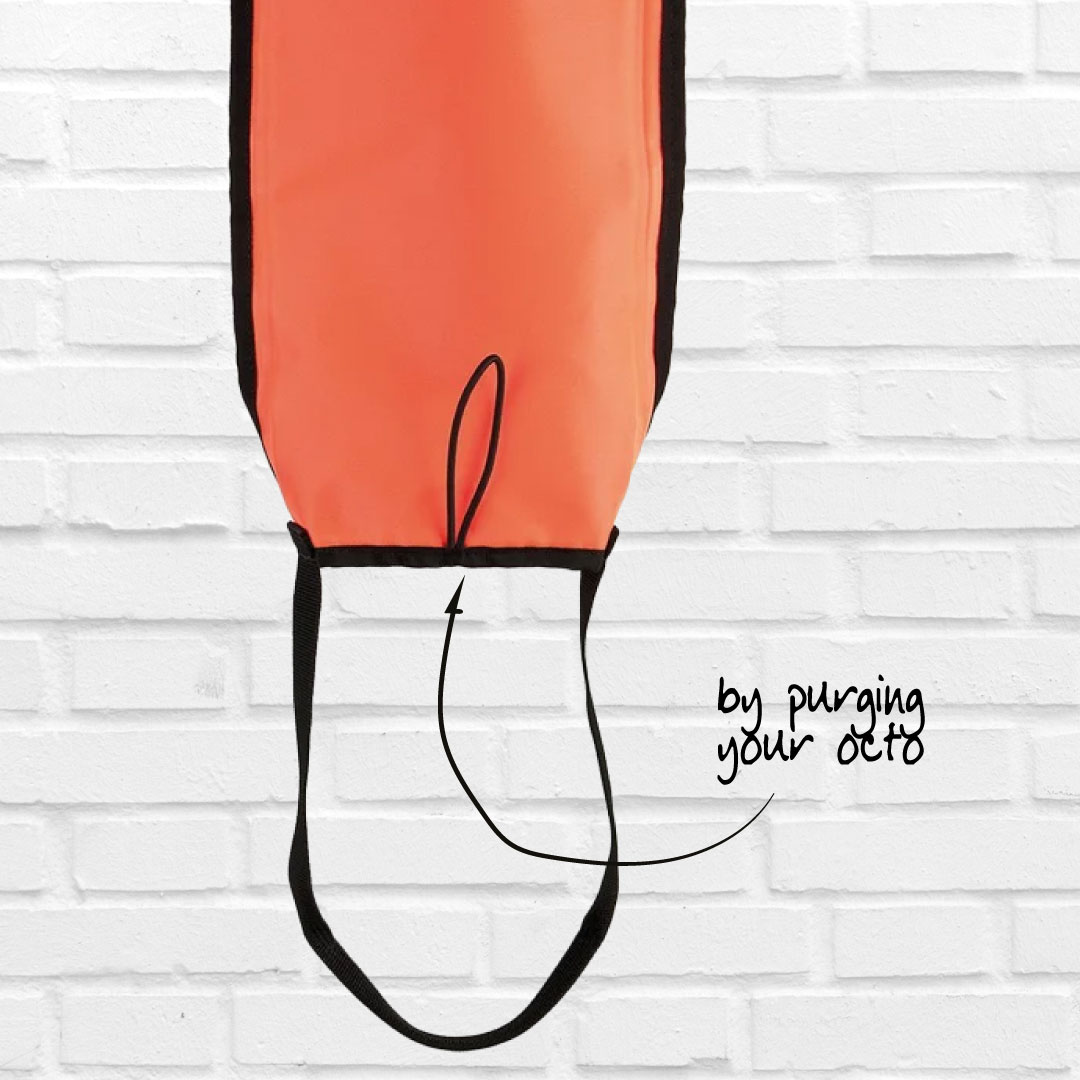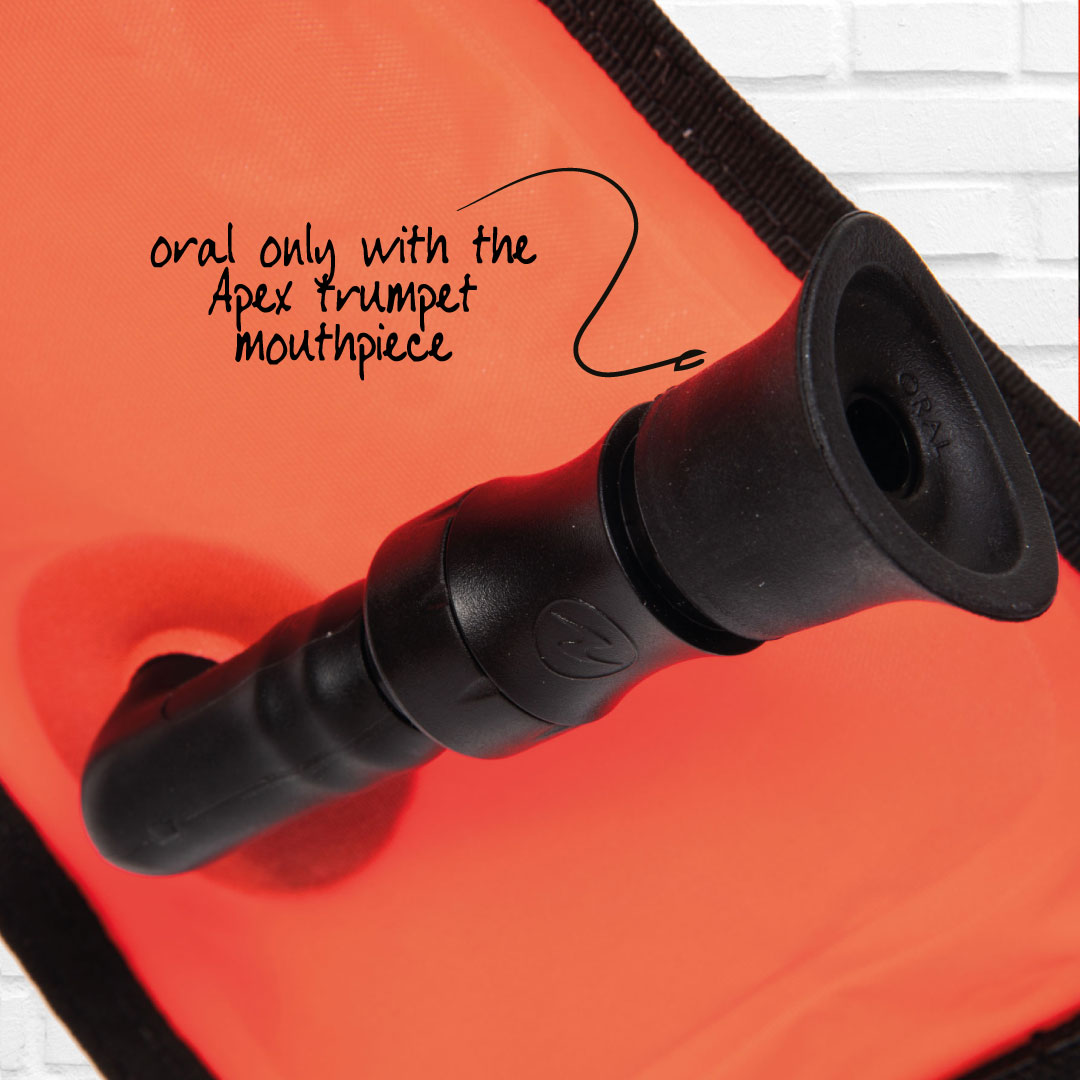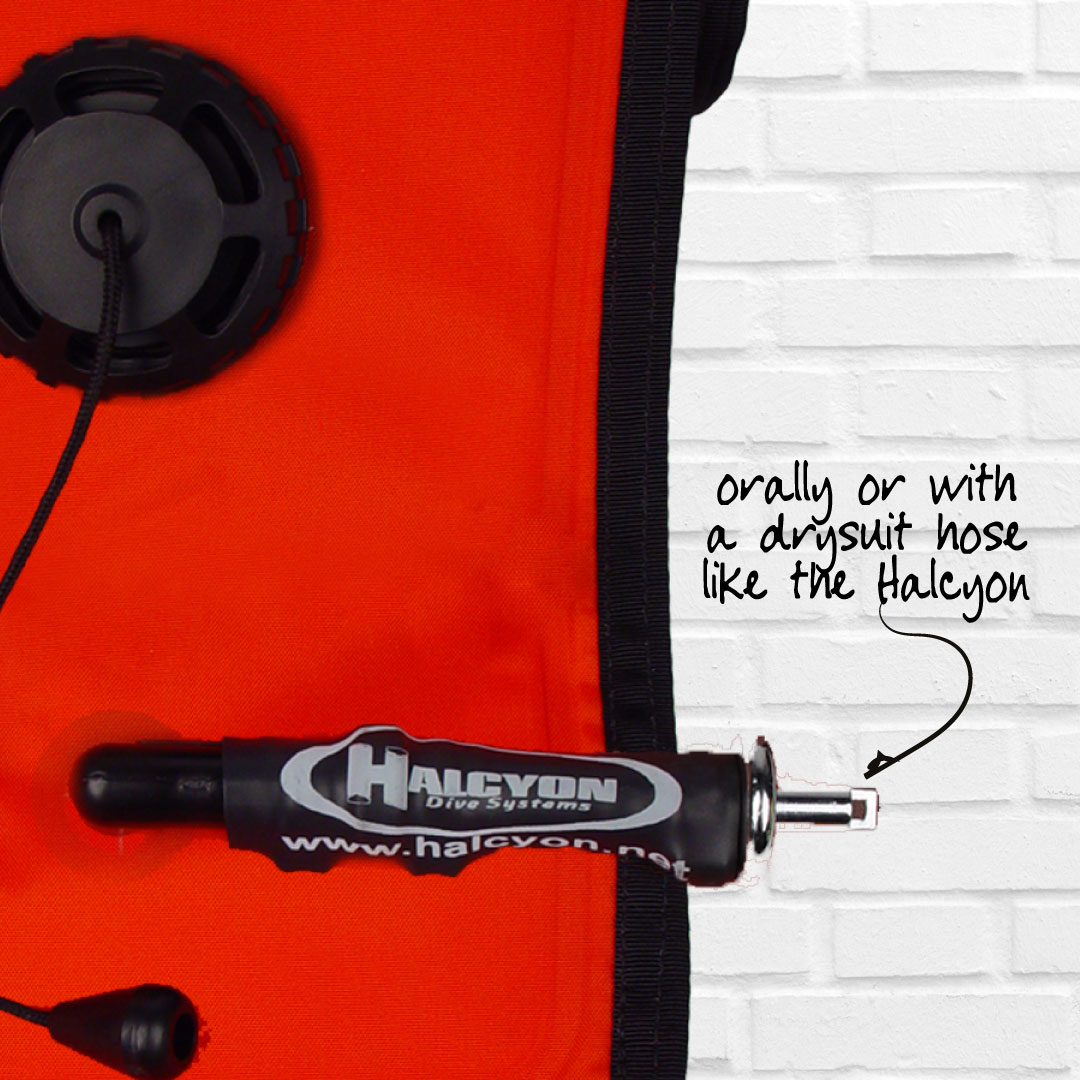When it comes to inflating a Surface Marker Buoy (SMB), often known as a Delayed Surface Marker Buoy (dSMB), divers will debate the best method to use. The honest truth is that you’ve really got to experiment with all the different methods to work out which is going to be best for you – all divers are different!
What’s the difference between inflating an SMB and a dSMB?
SMBs and dSMBs are both essential safety tools that are used in diving to mark our position in the water. They help stop boats getting too close, they help us be spotted if we’ve drifted away from where we’re expected to be, they help shore cover track our direction and they can even be used to pass notes from divers underwater to their support on the boat!
SMBs are inflated before you hit the water and are pulled around with you while you’re diving. They’re a constant visual aid that alerts everyone to the fact that there’s divers below. They’re usually a bit more substantial than one of those sausage-like SMBs you’ll have seen. I use this method if I’m guiding or teaching so that my shore crew always know where I am. Because the SMB is so big, it makes me dead easy to see from shore, and I can actually store things in it too – I keep extra weights and safety gear like pocket masks in there just in case I need them. ?

A dSMB is inflated underwater, usually just before the divers are about to start their safety stop. This buoy is attached to a reel, inflated slightly and released to make its way to the surface. The diver then reels in the line as they start ascending. They’re commonly used on boat dives to help skippers spot their divers so they can go and pick them up. In more technical diving, they can also be used to pass notes between divers on their deco stops and their support crew. They might send up a certain colour to signal an issue, or they could even add notes for their crew to read and act on. Here’s Nic about to launch their dSMB ?

WHICH METHOD SHOULD I USE TO INFLATE MY SMB?
Understanding the various methods for inflating an SMB and their respective advantages and disadvantages is important – you need to match the method to your style of diving to make sure it’s a good fit.
In this guide, I will break down the different techniques, helping you choose the best one for your needs. From using a regulator to oral inflation and low-pressure inflator hoses, I”ll explore each method in detail, providing you with the insights needed to make an informed decision.
1. Using a Regulator
One of the most common methods for inflating an SMB involves using your backup regulator or octopus. The process is straightforward: you insert your regulator into the SMB’s open bottom, press the purge button, and let the air flow.
Pros:
- Quick and efficient.
- Easy to perform, especially with practice.
Cons:
- Can lead to significant air wastage.
- Increased risk of free flow, especially in cold water, which can cause ice crystals to form.
- Higher entanglement risk due to the fact you’re putting your chunky reg with lots of snagging points next to loops and line.

2. Oral Inflation
Oral inflation is another popular method. Many SMBs come equipped with an oral inflation valve, allowing you to blow air directly into the buoy. Some have a no-return valve so you just blow and your air will fill the SMB and not escape, others need you to push in the valve to open it.
Pros:
- Conserves air from your tank.
- Simple mechanism with minimal equipment.
Cons:
- You need to take your regulator out of your mouth, blow into the SMB and then find your reg again – this takes practice and can make some divers feel a little uncomfy.
- You may need to add more than one breath – this means have good control of your buoyancy to not be overly affected by a partially inflated SMB while you take your second breath.
- Can be challenging in cold water where sealing your lips around the valve might be difficult.
- Requires practice to efficiently inflate the SMB – you need to know how much air to blow in depending on your depth so that it reaches the surface adequately full to stand tall.

3. Using a Low-Pressure Inflator Hose
Oral inflation valves can also be used to inflate your SMB using a low-pressure inflator hose. You can either use an additional hose dedicated to the SMB or temporarily detach your dry suit hose to connect it to the SMB.
Pros:
- Really quick and easy to inflate – just push and release.
- Reduces the risk of free flow.
Cons:
- Disconnecting and reconnecting drysuit hoses underwater can be tricky if your hands are freezing at the end of the dive.

4. Using a CRACK BOTTLE
Some SMBs come with their own separate air supply! A little cylinder is attached to the SMB and you simply open the valve to inflate and launch.
Pros:
- Make the whole process of launching and SMB self sufficient – you don’t need to disconnect any of your diving gear or take your reg out your mouth
Cons:
- Even though the crack bottle is small, it still bulks out your SMB making it harder to store in your pocket.
- You better not forget to charge the bottle each dive!
- The bottle need servicing to keep it in good working order.

Choosing the Right SMB INFLATION Method FOR YOU
The best method for inflating an SMB largely depends on your personal preference. Here are some considerations to help you decide:
- Diving Environment:
- Cold Water: Avoid using a regulator due to the risk of free flow. Oral inflation or a low-pressure inflator hose is preferable.
- Warm Water: Any method can work although you’d need an extra hose added to your reg setup if you’d like to use LPI inflate method.
- Air Conservation:
- If conserving air is a priority, opt for oral inflation or a low-pressure inflator hose.
- Ease of Use:
- If you prefer a quick and easy method, using your drysuit hose to inflate might be your best bet.
Practice Makes Perfect
Regardless of the method you choose, practising in a controlled environment, like a pool or a training tank, is essential. The best way to work out which method for inflating your SMB works best for you is to get a load of SMBs and reels and get in the water. If you’re local to Honest HQ, why don’t you jump in our training tank and try them all out?
Familiarise yourself with the equipment and techniques and practice until you find a method you like… and keep practicing! We’re all guilty of leaving the task of launching an SMB to someone else – your instructor, guide or someone more experienced in your team. You need to keep this skill fresh – you need to be able to send up an SMB just in case there’s no one else there to do it for you. Remember – there’s nothing wrong with sending up your SMB, even if there’s already one launched!
